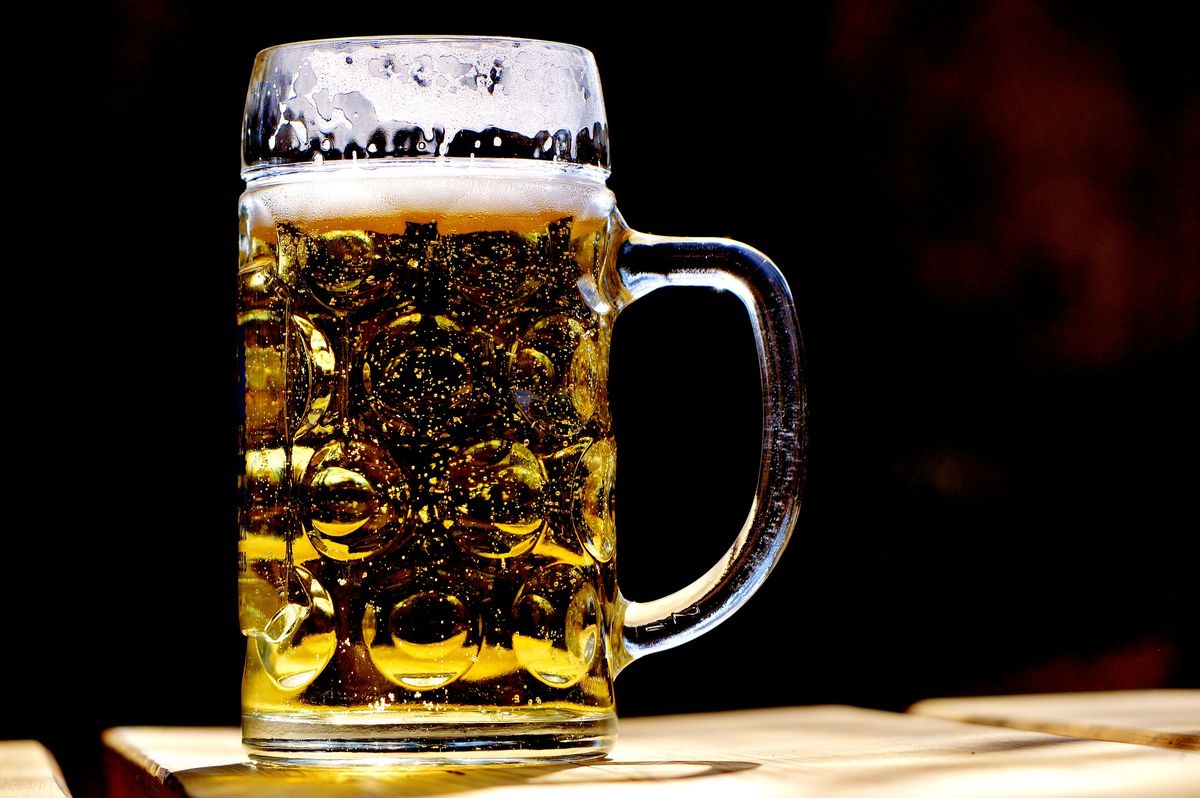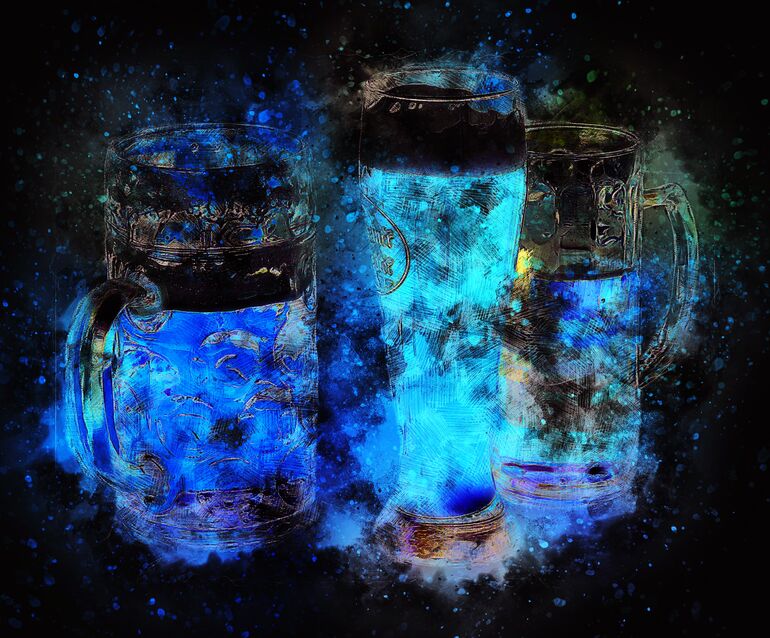Start 14-Day Trial Subscription
*No credit card required

2019 Consumer Trends
Total dollar sales over the last 52 weeks rung in at more than $35 billion, up 1.8 percent from the previous year, while total volume sales were down 0.4 percent, again pointing to the fact that people are willing to pay more for quality beer.
The data we’ve examined comes from IRI Worldwide, a market research firm that tracks category-wide sales trends of beer sold in numerous retail outlets and then produces a monthly report of its findings. These findings can be used to provide real-time insight into the ever-changing beer marketplace, both Craft and Macro. They can also help industry participants adapt to the marketplace and help you make more informed choices as a consumer. To save you the spreadsheet trawling, we’ve pieced together the most important changes in beer sales over the year of 2018 and will compare them to the prior year.
Before we dive in to this year’s data, here are a few things to keep in mind – these numbers are on an international scale and may not represent individual brewery or regional sales accurately. The numbers also do not draw a hard line between beer styles within certain categories, which could mask sales trends of smaller brewers. They track sales of packaged beer only and from a few different sources, including convenience stores (think gas stations), a general “food” category (grocery stores, etc.), and a combined multi-outlet and convenience (MULC) store category (a combination of grocery, drug, Wal-Mart/Sam’s Club, dollar stores and military stores, among others). We will focus on the MULC category. While not all-encompassing, it’s a great, well-rounded resource.
Big Styles in Craft
2018 wasn’t a bad year for Craft beer sales, as the segment saw a 3.1 percent increase in dollar sales compared to the previous year.
The IPA is riding high once more, comprising roughly 35 percent of all Craft beer sales. At around $1.5 billion of Craft’s total $4.2 billion share, it is a force to be reckoned with. Within the world of IPAs, the explosion of the “Haze Craze” is to thank, injecting new life into a style that had started to drift into an oblivion of bitterness. These milkshake-style ales have really opened the eyes of both the drinker and brewer to the versatility of the style. The once bitter booze-bombs have now shifted towards thick, fruit smoothie and mimosa-esque styles that will draw in new subsets of drinkers by pushing the conventions of what a beer’s qualities can be.
Now, it’s okay to drink a beer with a mouthfeel as thick as high-pulp orange juice – so, in theory, anyone who likes orange juice and alcohol now has the potential to become a craft beer fan.
Despite the standard of boundary-pushing associated with American Craft, the other real tale of the tape has been a return to subtlety. We are finally seeing the American palate develop to appreciate more refined, historically European styles en masse.
As a result, 2018 has been a good year for lower-ABV, less malty styles. Blonde/Golden Ale has continued its meteoric rise, up another 14 percent from last year, which saw similar growth, and Pale Lagers are up an enormous 41.1 percent from the year prior.
Further, Belgian Ale dollar sales are up nearly 10 percent from the year prior, and Craft Light Beer has jumped by 21 percent.
Unsurprisingly, styles such as Amber Ale, Amber Lager, Strong Ale and Dark Beer are all down double-digits from the year prior. This certainly doesn’t mean these are doomed styles, just that consumer preferences are shifting towards less focus on maltiness, alcohol and bitterness, and more focus on aroma, flavor and drinkability.

2018 has been a good year for lower-ABV, less malty styles. Blonde/Golden Ale is up another 14 percent from last year and Pale Lagers are up an enormous 41.1 percent.
From a cultural perspective, these sales trends could also indicate the changing mindset of the average Craft drinker; it’s less Wild West, frontier-style flavor exploration at the expense of health and functionality and a more natural integration into everyday life. People are opting for a mild, aromatic pale ale on a first date or an agreeable craft light lager that the whole family (of legal drinking age) can enjoy. Thus, you can have your beer and drink it too.
Look for these trends to continue in 2019 and gradually shift into other realms of liquid flavor, while maintaining a lower-ABV mindset. And a few years down the line, look for it all to come full circle once more.
Beer by Category
Overall, beer had a good year. Total beer sales in the past 52 weeks are up nearly two percent, which translates to over $600 million more dollars spent on beer than last year.
In fact, there were only two major categories that did not see an increase in sales, and that is Domestic Premium, which are the flagship brands of Budweiser, MillerCoors and others and Domestic Sub-Premium (Icehouse, Natural Light and associated parties). Domestic Premium dollar sales are down 3.8 percent from last year, which translates to a whopping $500 million, while Domestic Sub-Premium is down 1.3 percent, or around $70 million.
Obviously, Craft has played a large role in the decline in Domestic sales, but the battle for beer market share is very much a battle royale.
Imported beer has seen a hefty increase of dollar share, up nearly 8 percent to just over $500 million, a trend that will likely continue to increase. The largest contributor to the growth of the import category is Mexican beer, boasting big names like Corona, Dos Equis and Modelo. These beers are quite similar to Domestic Premium lagers, and thus capable of grabbing pieces of that market, but they also compete with Craft as “non-Domestic” options and boast a similar allure.
Then we have Domestic Super Premium, which are the Macro-Craft options like Blue Moon, Goose Island and so on. These guys work for Big Beer while simultaneously contributing to the declining sales of Domestic Premiums. With a dollar sales increase of 14 percent, Domestic Super Premiums are the only category to see double-digit growth this year, which is an increase of $350 million.
Though the Supers do take bites out of Domestic Premium sales, they take bigger bites out of Craft, which is a large part of the reason the Craft category has seen relatively mild sales increases in the past few years. This year, Craft grew by 3.1 percent, or about $124 million in sales, which we can mostly attribute to the category’s ability to deliver fresh takes on the IPA style far more quickly than any other.
Outliers
AB InBev’s Michelob Ultra remains immune to the pressures mounting around Domestic Premiums, seeing a hearty 14.6 percent increase in sales this year, bringing its sales for the year to just under $500 million. These sales indicate the same trend we’ve seen within Craft – a move back to lower-ABV, lower-calorie options. Its reliable placement alongside Domestics wherever they are sold give it ample opportunity to be the healthier alternative.

Total beer sales in the past 52 weeks are up nearly two percent, which translates to over $600 million more dollars spent on beer than last year.
The Flavored Malt Beverage category is always a bit of a toss-up, but usually there is a meteoric rise or equally rapid decline in sales triggered by a few key players. Not Your Father’s Root Beer took the world by storm a few years ago but has since petered into oblivion. This year has seen the rise of “Hard Seltzer.”
White Claw Hard Seltzer saw sales increase almost 490 percent this year and is now a top 25 brand. Similarly, Truly Spiked and Sparkling grew by 190 percent and cracked the top 50 biggest brands, selling more than Boston Lager and Fat Tire. This is partially attributed to the popularity increase of non-alcoholic cider but also, once again, points to a desire for healthier drinking alternatives.
Founders All Day IPA is now one of the most popular beers in the Craft segment after a 37 percent sales increase this year. This jump places it in the top ten Craft brands (by IRI’s classification) and second to only Lagunitas IPA in terms of IPA sales.
What do each of these outliers have in common? They’re all either low in alcohol or low in calories.
Takeaways
From this swirling vortex of numbers we can deduce that the American palate and sensibility is skewing towards refined drinking choices. Less sugar, alcohol, bitterness… but we still want more hops. This means dry hopping and other more advanced methods of imparting flavor into beer beyond artificial additives will become even more integral for breweries wishing to succeed in the current climate.
This also points to the shifting place of beer and beer-like drinks within our culture. Beer has long been the drink of community and celebration, and it is now also becoming the go-to choice for active lifestyle individuals who want a drink that enhances their experience without weighing them down physically or mentally.
To boil the year’s drinking trends down to one sentence: We value flavor, but we also value our health.
Next Year
Successful beer styles in 2019 will find novel and authentic means of imparting more flavor without cheapening the experience, because drinkers are becoming harder to fool with cheap tricks.
Exploration of flavors within stylistic subsets may lead to striking gold, and the keys to doing so will be technical brewing expertise and the use of real ingredients that minimize guilt on the drinker’s behalf.
We may see some Frankenstein creations, but the public will ultimately decide what is inherently good and will support these products with its collective coin purse.
Lastly, the increase in sales of alternative alcoholic beverages, be it cider or seltzer, point to the value in branching out beyond traditional beer. If you brew it and it has merit, it will find its place in the market.



